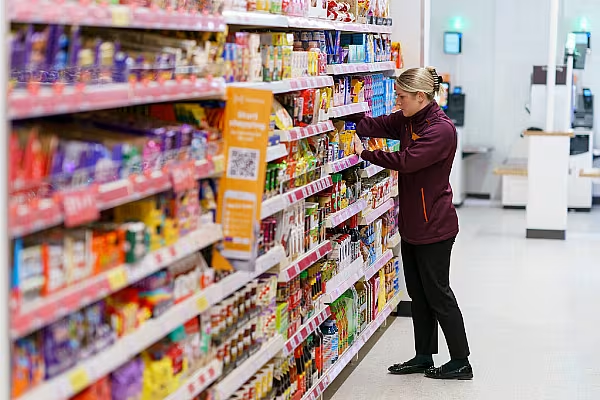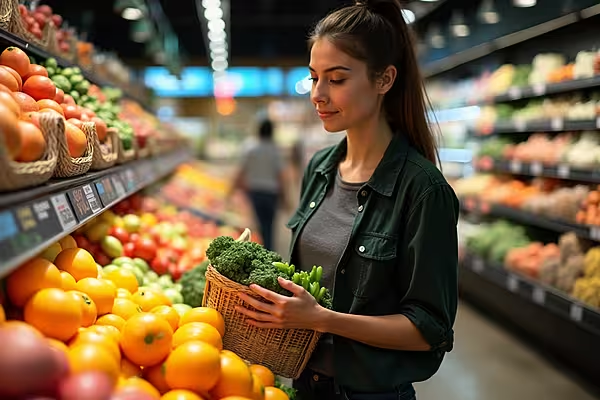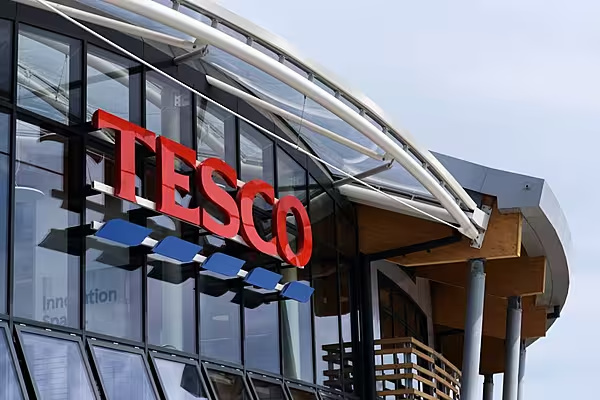British retailer Sainsbury’s this week reported an 8.4% like-for-like increase in sales in the first half of its financial year, while operating profit from its retail business went up by 2%, reflecting ‘strong volume-driven grocery profit growth,’ the group noted.
“We’ve never been more competitive on price, and our focus on value, innovation and service is giving more customers more reasons to shop with us,” commented Simon Roberts, chief executive.
Here’s how leading industry analysts from Admirals, Wealth Club, Shore Capital, GlobalData and AJ Bell viewed Sainsbury’s performance.
Roberto Rivero, Admirals
“Sainsbury’s previously signalled that it intends to prioritise maintaining competitive prices over profitability, and this has been reflected in its underlying profit before tax, which, although beating analysts’ expectations, remained flat, year on year.
“The supermarket industry is highly competitive. In the UK, you have a dozen or so main players who all provide essentially the same service to consumers. Therefore, particularly in a time where everyone is watching their outgoings more closely, many consumers tend to flock to wherever has the cheapest prices.
“This means that supermarkets often struggle to pass higher costs on to customers, as if prices get too high, they will simply take their business elsewhere. In this climate, Sainsbury’s has little choice but to hold prices low and let profitability take a hit, as it attempts to fend off competition from low-cost competitors such as Aldi and Lidl, both of whom have successfully expanded their market share during the current cost-of-living crisis.”
Charlie Huggins, Wealth Club
“This is another solid trading update from Sainsbury’s, with further volume growth in the second quarter and an improved market share performance. This means the group now expects profit for the year to come in at the top end of its previous guidance range.
“Food inflation is starting to fall, and this should help ease pressure on consumers, whose finances have been squeezed from all angles by rising prices, no more so than for the weekly shop. That said, lower inflation also means volume growth will become a more important contributor to like-for-like sales in future periods. It is encouraging that Sainsbury’s volumes grew in the second quarter, but it will need to maintain this momentum.
“Sainsbury’s cannot afford to rest on its laurels. The supermarket sector remains intensely competitive, and the UK consumer is far from being out of the woods, but the group is holding its own and will go into the important Christmas period with a measure of confidence.”
Clive Black, Shore Capital
“Sainsbury equity trades on an FY24 PER of 12.9x, an EV/sales ratio of 0.37x, and an EV/EBITDA multiple of just 5.7x. Frankly, we believe that, alongside the high aforementioned FCF yield, not to overlook that of the attractive dividend, Sainsbury equity trades on undemanding ratings. Continued effective execution and ongoing sequential PBT and EPS growth should, to us, support the argument for capital appreciation and, in time, rating expansion.
“In difficult markets, we commend Mr Roberts et al. on their H1 FY24 delivery, we look forward to chronicling future progress, and like an increasing number of British shoppers, suggest it may make sense for investors to visit Sainsbury, too.”
Joe Dawson, GlobalData
“Sainsbury’s positive H1 results have shown a resilience in the face of discounter competitors and effectiveness in adapting to new consumer behaviours and trends, with the retailer reporting a 7.7% increase in group sales, to £18,865 million for the 28 weeks ending 16 September 2023. Building on strong numbers in Q1, the UK’s second-largest grocer expects to see profits in the upper half of its previous guidance, now between £670 million and £700 million, owing largely to impressive 10.1% food-and-grocery sales growth, as the supermarket continues to invest in low prices and its loyalty scheme.
“Food and grocery was indeed the star of the show in Sainsbury’s H1, as its ‘Food First’ strategy paid off. Sainsbury’s drove volumes by inflating at a slower rate than competitors, having invested £118 million in price cuts and rolling out its Nectar Prices loyalty scheme, to offer discounts on over 6,000 products.
“The focus on food saw non-food propositions taking a back seat in H1, with general merchandise growing by only 1.1% and clothing down 8.4%, as British summer weather disappointed customers and retailers alike. The slow general-merchandise growth was driven by a positive performance from Argos, where sales were up 1.7%, despite the cessation of its operations in Ireland, due to the popularity of its consumer electronics and technology offering and its 50-year celebrational promotions.”
Russ Mould, AJ Bell
“It’s been a while since Sainsbury’s has consistently done well, but the current management team seemed to have created a formula that works. Market share gains and improved sales volumes are proof that Simon Roberts’ strategic focus on food is paying off. In addition, staff are benefitting from higher pay, more employee discounts, and free food at work. Happy shoppers and happy staff make for a good combination.
“Success in the grocery sector lies in offering what customers deem to be good value for money. That doesn’t necessarily mean the cheapest price – more that they feel what they’ve spent is worthwhile.
“Sainsbury’s has long been seen as ‘stuck in the middle’ – more expensive than Asda, Tesco and the discounters, but not as pricey as Waitrose. Therefore, the business has never been the first choice to attract cash-strapped consumers, nor has it traditionally appealed to people with a few quid to spare.
“Sainsbury’s now enters the key festive trading period, where a lot lies on consumers deciding to splash the cash at Christmas, buying their food and toys from the grocer. Given this year’s performance so far, Sainsbury’s has a fighting chance of doing well, yet it has plenty of competitors, all with their own tricks up their sleeves.”













